I Drove the Best Mini-Supercar and Came to a Confusing Conclusion
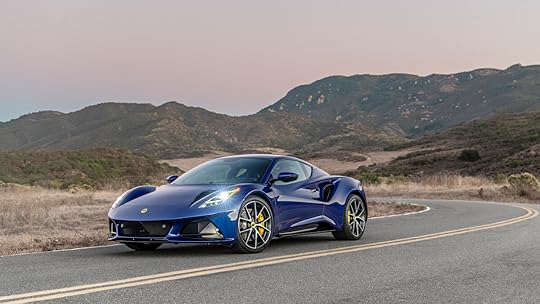 The Lotus Emira comes with two engine options, three different transmissions, and two suspension setups with entirely different goals.
The Lotus Emira comes with two engine options, three different transmissions, and two suspension setups with entirely different goals.Courtesy Image
Lotus gives Emira buyers more baseline choices than most sports and supercar manufacturers. This low-slung screamer can come with two engine options, three different transmissions, and two suspension setups with entirely different goals. Typically, in the automotive industry, spoiling customers for choice is a good idea, but those seven features actually only result in just six choices.
I’ve now driven three Emiras, so fully half of the lineup: a supercharged V6 manual with the Tour suspension, then the AMG inline-four equipped with a dual-clutch transmission and the Sport suspension, and now—finally—this AMG DCT (called the First Edition by Lotus) in Tour spec. That leaves only the V6 manual in Sport, plus the V6 torque-converter automatic in both Tour and Sport, on the table. Yet despite the laundry list, I can now fully conclude that only two packages for the Emira make any sense at all.
Understanding the Recipe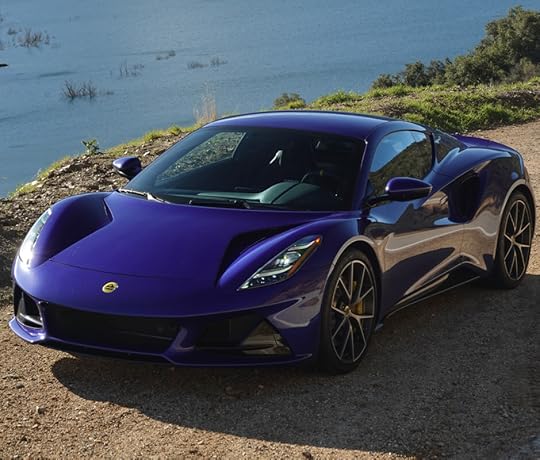 With the Emira, Lotus set out to improve almost everything about the Evora—from the exterior design, to interior ergonomics, modern connectivity, and performance.
With the Emira, Lotus set out to improve almost everything about the Evora—from the exterior design, to interior ergonomics, modern connectivity, and performance.Michael Teo Van Runkle
To understand the Emira, we need to revisit the Evora that preceded it. Still a mid-engined sports car, the Evora nonetheless added nearly 50 percent of the weight of its own predecessors, the Elise and Exige. The same supercharged 3.5-liter V6 sourced from Toyota as one of the Emira’s two engines served as the sole choice, with the same six-speed manual gearbox, too. And yet, the Evora represented a sea change in mindset at Lotus versus the much more raw and unrefined Elise and Exige, as the British firm attempted to add more comfort, more quality, and a somewhat absurd set of second-row seats.
With the Emira, Lotus admittedly set out to improve almost everything about the Evora, with which it shares much of a chassis—from the exterior design, to interior ergonomics, modern connectivity, and performance. Even the air conditioning blasts ice cold! And the visibility isn’t too bad, either (for a mid-engined car anyway).
Meanwhile, the new AMG inline-four should put out plenty of grunt for a 3,187-pound screamer, even if the 2.0 liters rated for 400 horsepower and 354 lb-ft of torque actually fall a bit short of the top-end output of the final Evora GT’s 416 horsepower. So in my mind, before ever jumping into an Emira, the main mysteries largely came down to how the DCT performs and how the different suspension packages transform life with an eminently more comfortable coupe.
In all seriousness, when pushing hard on twisty mountain roads, this AMG DCT Emira in Tour spec can corner with the best sports cars on the market. But we’re a long, long way off from the AMG DCT with Sport suspension that I drove this past fall, which managed to hold a gobsmacking 1.7 g of lateral grip...on a cold day…on public roads…with an amateur like me behind the wheel.
Related: Supercars Are Now Officially Fashion Accessories, Thanks to Social Media
Sport vs. Tour in a Sports Car, not a Grand Tourer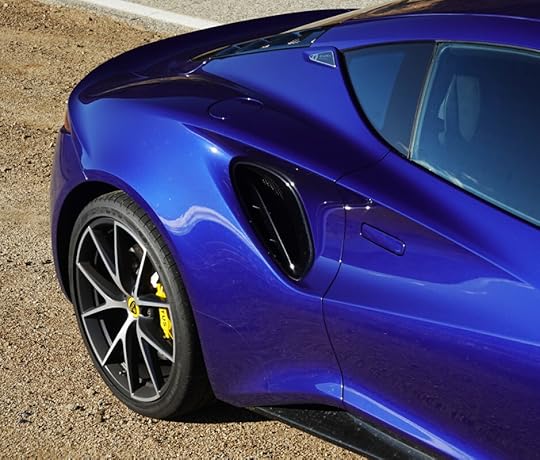 The 2025 Emira AMG DCT offers a Sport option—suspension gets stiffer springs and Michelin Pilot Sport Cup 2 tires—or the Tour, which uses softer springs and Goodyear Eagle F1 rubber.
The 2025 Emira AMG DCT offers a Sport option—suspension gets stiffer springs and Michelin Pilot Sport Cup 2 tires—or the Tour, which uses softer springs and Goodyear Eagle F1 rubber.Michael Teo Van Runkle
So what’s the difference? The Sport suspension gets stiffer springs and Michelin Pilot Sport Cup 2 tires, while the Tour uses softer springs and Goodyear Eagle F1 rubber. The tires probably made for most of the difference in cornering forces, I believed at first, since I maxed the Tour cars out at more like 1.2 g. That’s almost a 50 percent advantage for the Sport, but on the other hand, daily driving Cup 2s on cold, rainy, or frosty roads can certainly spell disaster.
The problem is, though, that the Tour suspension also makes daily driving worse. Both the supercharged V6 manual and AMG DCT cars when equipped with the softer springs demonstrated strange shakiness, transmitting every bump and crack in the road straight to the driver’s spine, while tramlining as well as an actual train on highways and almost losing composure over any mavy portions of asphalt.
A magic point exists for any suspension system, at which the ground provides a complementary amount of damping force to the shocks and springs. Bicycle manufacturers discovered this decades ago, as evidenced by the era when high-performance road bikes with tires as skinny as a pencil switched from curved front forks to straight designs. Try smacking a table and listening to the reverberations—then slam your hand down onto the table and hold it there. Which caused the table to calm down more quickly? (Ernesto Colnago supposedly learned this from Enzo Ferrari, actually, so the story comes full circle.)
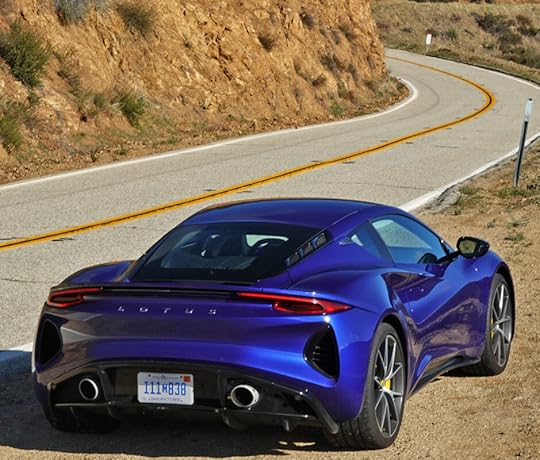 The 2025 Emira AMG DCT has stunning style, arguably the best-looking car on the market today.
The 2025 Emira AMG DCT has stunning style, arguably the best-looking car on the market today.Michael Teo Van Runkle
Similarly, the Emira’s Sport suspension glues the car to the ground, so the ground can take over some of those calming responsibilities. By loosening up the Tour suspension, the chassis then needs to do all the work, ruining the exact mechanical advantage that makes low-slung mid-engine sports cars so spectacular in the first place.
Talk about the worst of both worlds. Now throw on the Goodyear tires, which lack both the grip and communication of the Cup 2s, and the situation becomes even more baffling. Precisely because the ingredients should be so good! Stunning style, arguably the best-looking car on the market today, to my eye. A modern interior that fits my 6-foot-1 frame comfortably, with a little parcel shelf behind the seats in place of the Evora’s vestigial second-row seats. A lightweight chassis with a wider track, and a new engine option from what we certainly know is a capable powertrain partner.
Corporate Considerations Over Enthusiast Excitement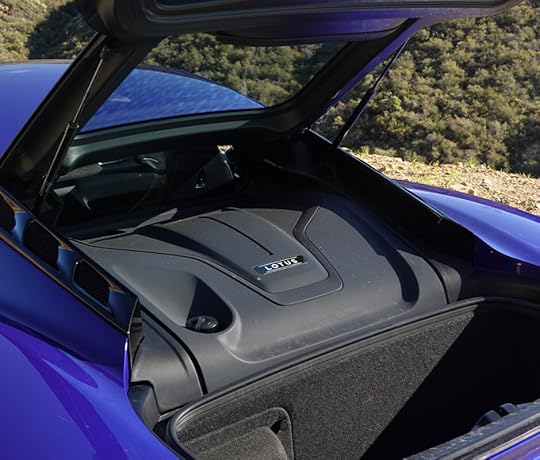 A 2025 Emira powered by either the supercharged V6 or AMG inline-four can still launch hard enough to terrify friends.
A 2025 Emira powered by either the supercharged V6 or AMG inline-four can still launch hard enough to terrify friends.Michael Teo Van Runkle
In fairness, an Emira powered by either the supercharged V6 or AMG inline-four can still launch hard enough to terrify friends. But Lotus has never been about all-out straight line speed. Instead, a Lotus should carve through cornering loads and happily, confidently step the tail out and drift with the traction control turned down.
The fact that the Emira with Tour suspension only does seem happy with the springs compressed—in a hard squat during full-throttle acceleration, threshold braking, or high-g cornering–confirms my suspicion that the Tour spec as a whole was almost certainly an afterthought. I figured Lotus engineers developed the Emira specifically to house the AMG engine with the Sport suspension, and then some bean-counting executive called down from the corner office insisting that older customers will need a softer option.
This likely shrunk the development timeline, and the engineers probably didn’t care, telling themselves that purposefully compromising the exact car they built to be perfect made no sense in the first place. Then, when the resulting Tour setup started porpoising and bucking and rolling, the only way to achieve any kind of handling prowess was to overcompensate with over-aggressive alignment specs. Which then ruins the steering—to the point that I never felt comfortable driving the Emira Tour with one hand, even in a straight line.
Meanwhile, I also suspect that AMG pulled a fast one on Lotus. Selling this 2.0-liter engine and DCT as a single unit makes sense, but only at first. Surely Mercedes-Benz has a manual transmission that can bolt up, and maybe AMG even promised that from the get-go (or maybe not). The Emira’s chassis seems perfectly built for the engine, that much is clear. But whether Lotus knew they would have to then tune the engine and DCT also seems unlikely.
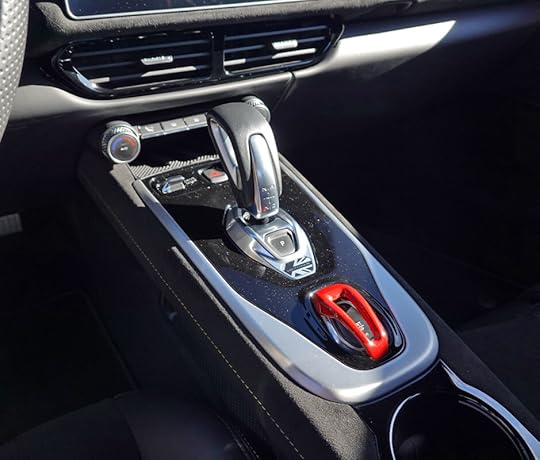 The 2025 Emira AMG DCT seems not to take into consideration braking at all—at low speeds, the shifts throw off engine deceleration and braking modulation entirely.
The 2025 Emira AMG DCT seems not to take into consideration braking at all—at low speeds, the shifts throw off engine deceleration and braking modulation entirely.Michael Teo Van Runkle
Evidence to support my theory includes the fact that Mercedes-AMG sells the A-Class with the same engine, but putting out 16 more horsepower. Yet that Euro-spec hatchback both sounds better and drives better than the Emira equipped with the same engine—with none of the lurching, uncertain gearshifts, and driveline flares that the Emira exhibits even in the base drive mode. Plus, to put the Lotus in either Drive or Reverse, the driver needs to push or pull on the gearshift lever twice—for no discernible reason, which makes trying to perform quick maneuvers in town borderline impossible.
The DCT also seems not to take into consideration braking at all. At low speeds, the shifts throw off engine deceleration and braking modulation entirely—when the gearbox isn’t shuddering or vibrating raucously, anyhow. Toeing light inputs into the brake pedal while trying to inch forward in traffic simply doesn’t work. Only driving as hard as possible at all times keeps this car settled down, a catch 22 that belies the entire purpose of selling a Tour suspension setup in the first place.
Related: This Is the Most Spectacular Supercar You Can Drive Now
Final Conclusions on a Confusing Mini-Supercar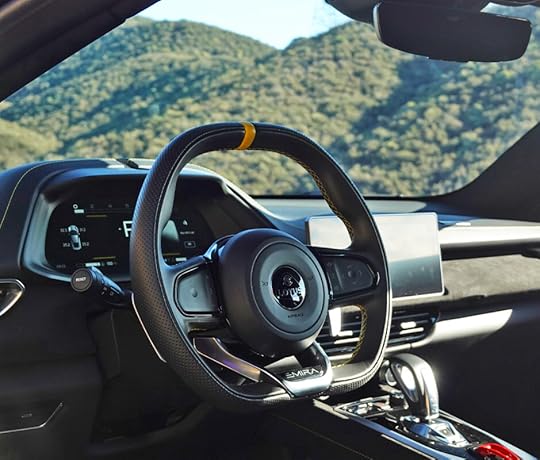 The 2025 Lotus Emira AMG DCT steering is constantly upset, the suspension unsettled, and the drivetrain unpredictable.
The 2025 Lotus Emira AMG DCT steering is constantly upset, the suspension unsettled, and the drivetrain unpredictable. Michael Teo Van Runkle
So the steering is constantly upset, the suspension unsettled, and the drivetrain unpredictable. Darty and dramatic, impossible to drive smoothly at low speeds, uncomfortable at higher speeds on anything but the smoothest tarmac. At least with the outdated Toyota V6—quite literally a minivan engine—the stick shift somewhat served as a distraction from the suspension situation. And driving the AMG DCT in Sport spec, the sublime chassis compensated for and distracted from the powertrain’s problems. But here with the Tour package, the AMG and DCT’s engagement, or lack thereof, also only emphasize the suspension and steering woes.
The only partial solution I discovered? Keeping the car in Sport or Track mode and fully shifting manually via the paddle shifters myself. At all times. Not very Tour-y, to say the least. And who knows, maybe a good-old-fashioned V6 bolted to the torque-converter automatic (in Sport trim, of course) might just work best—again, quite literally driving as smoothly as a minivan. But are we truly trying to make a low-slung mid-engined mini-supercar more and more soft?
The Emira gains so much versus my favorite Evora, not the final GT variant but the preceding 400 model (even if what I truly want is an Inokinetic-tuned Exige). But sacrificing both daily driveability and all-out performance makes no sense. I’m simply not willing to give my fourth Emira, the supercharged V6 manual with Sport suspension, another go-round.
Because what I know now, only a 33 percent hit rate for one of my most highly anticipated cars of this decade simply won’t cut the mustard for a tiny company trying to survive by adopting assembly line production methods and taking on foreign ownership amid a larger industry struggling with the brinkmanship politics of EV adoption.
And we’re missing the most important point anyway: The real truth, in the end, is that Lotus should have played their own brinkmanship games with AMG and insisted on buying the 2.0-L with a manual transmission. In short, an Emira for a new era should come with the AMG engine bolted to a six-speed stick shift, and the Sport suspension—or nothing at all.
2025 Lotus Emira AMG DCT Touring SpecsEngine: 2.0-liter, turbocharged four-cylinderTransmission: 8-speed dual-clutch transmissionHorsepower/Torque: 400 hp/354 lb-ft0-60: 3.8 secondsTop Speed: 171 mphPrice: From $99,900
Men's Journal's Blog
- Men's Journal's profile
- 1 follower



